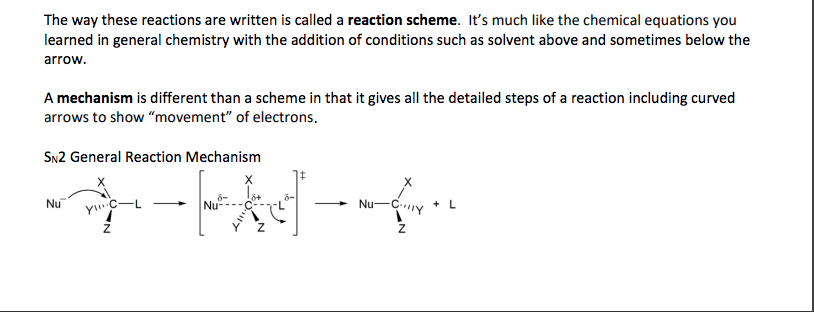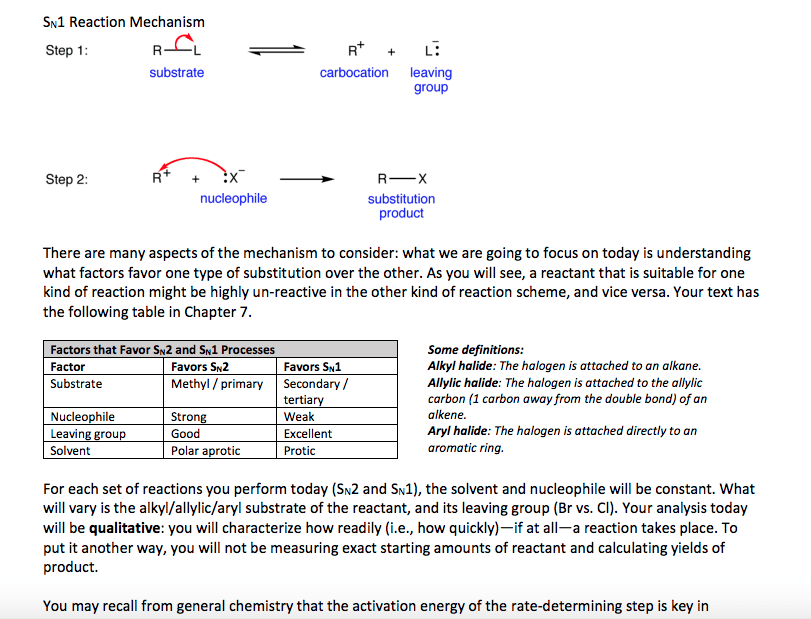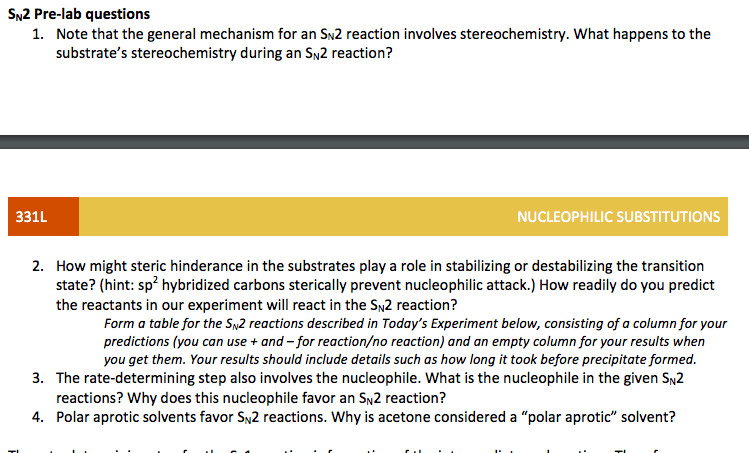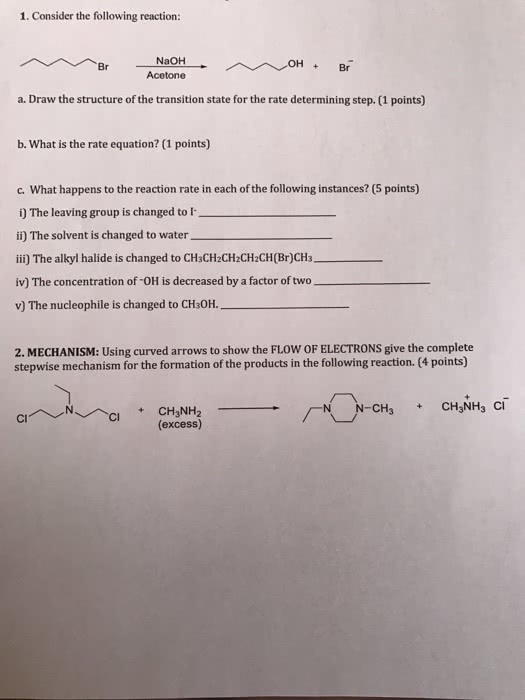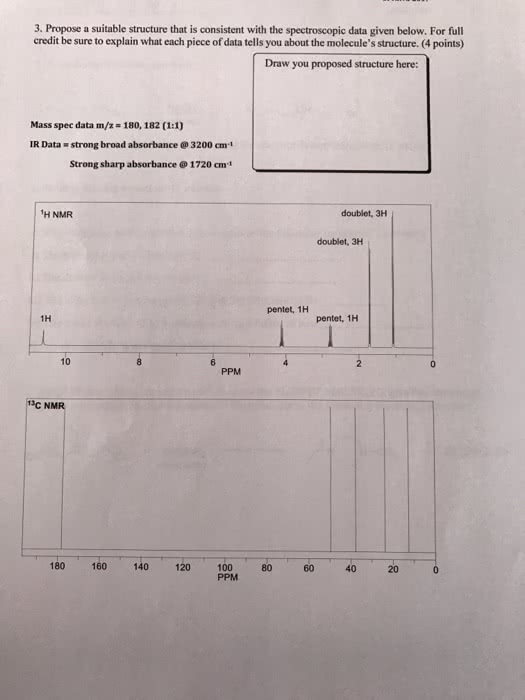01:160:307 Chapter Notes - Chapter 9: Protic Solvent, Rate-Determining Step, Steric Effects
Document Summary
Differences between sn1 and sn2: sn2 occurs in one step so it has no intermediates, sn1 forms a carbocation (an intermediate) F- is the strongest nucleophile and i- is the weakest nucleophile: in polar protic solvents, nucleophilicity is determined by polarizability so. Favored in polar aprotic solvents with strong nucleophiles. Favored in polar protic solvents with weak nucleophiles. E1: overall reaction, mechanism, step 1: the halide (leaving group) departs and forms a carbocation and br, step 2: deprotonation of the beta carbon to form an alkene. Favored if sterically hindered strong base is used. Favored with strong bases (like oh- and ro-) Sn1 vs. e1: generally, if weak bases are used, sn1 predominates. Sn2 vs. e2: increased branching at the beta carbon increased steric hindrance decreased sn2 possibility, strong base favors e2, strong nucleophile favors sn2. Analysis of reactions [put the sn2 examples here]





